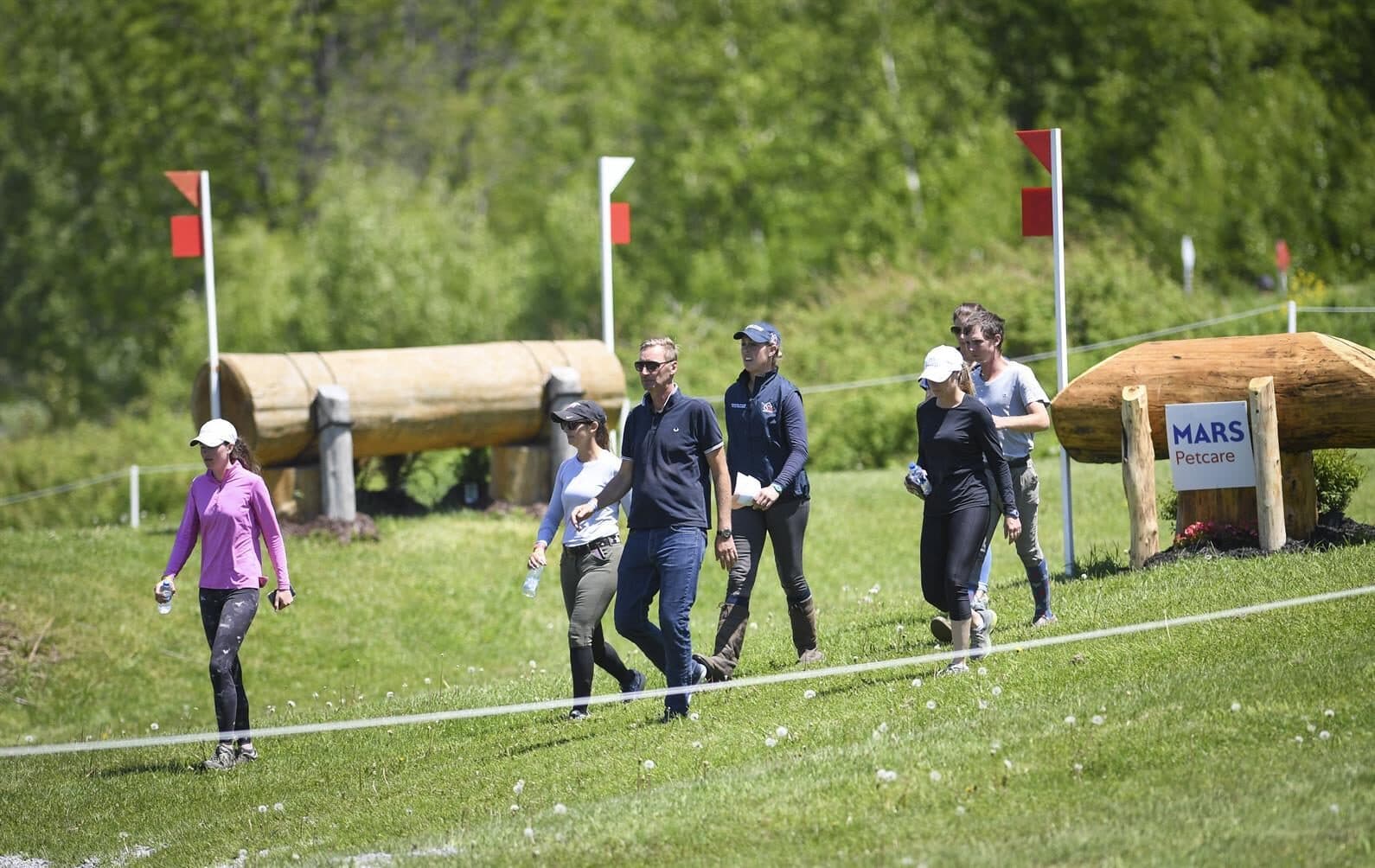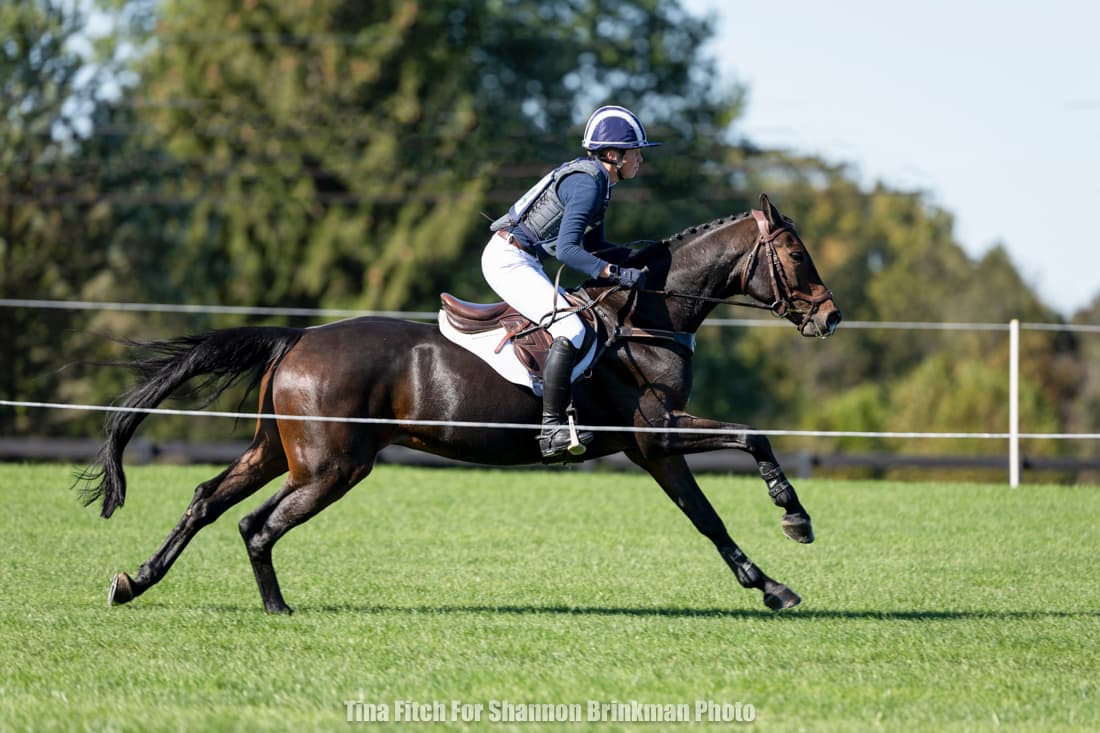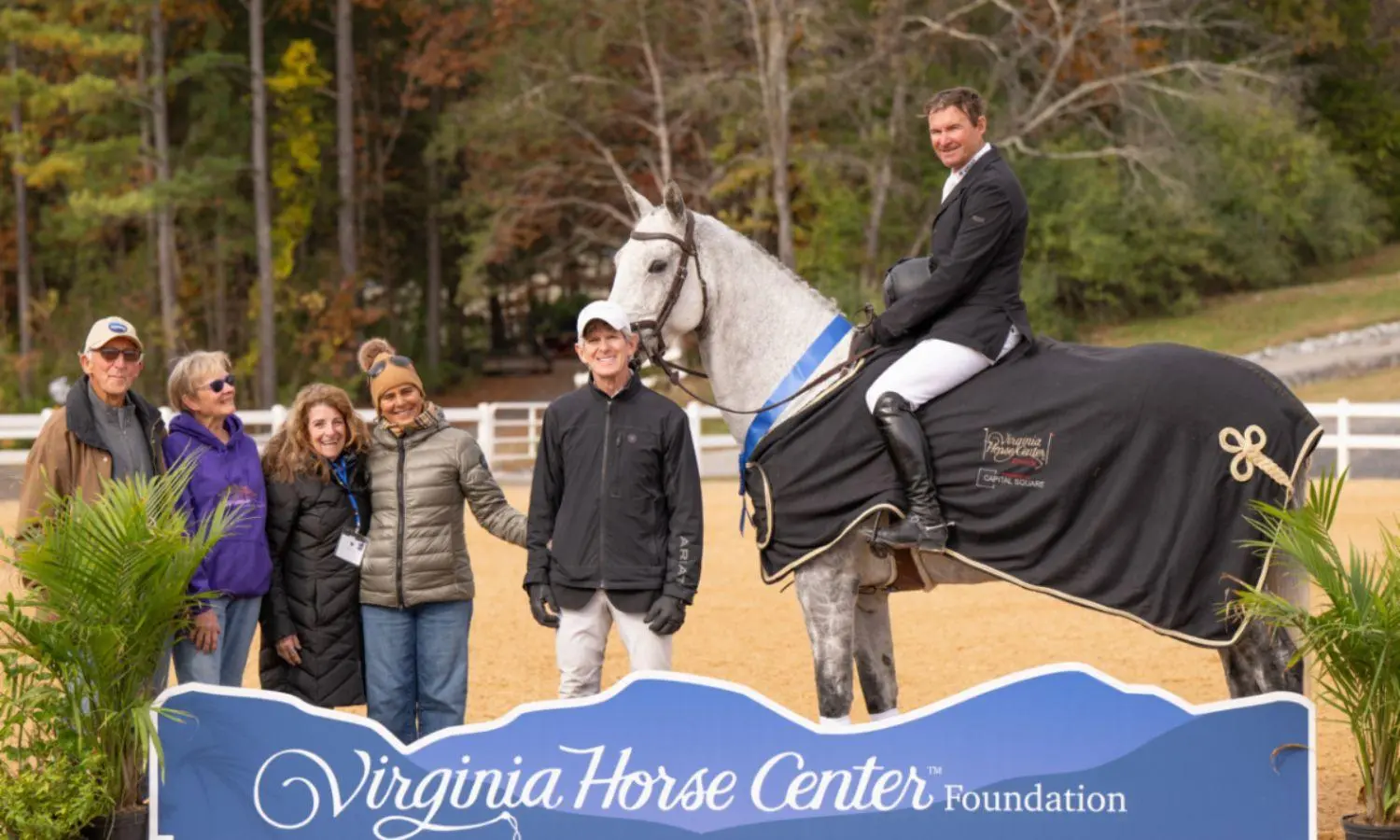Rules
Rule Refresher: Cross-Country Phase Obstacles

The cross-country phase is what makes eventing stand out among equestrian sports. There’s an adrenaline rush riders experience when out on cross-country that is unmatched in eventing’s other phases. The cross-country course also gives each show and venue its unique flavor. Nonetheless, while each course may be different, the rule below from the USEF Rules for Eventing governs what riders and horses can expect to see during the cross-country phase of an event.
Text has been taken directly from the USEF Rules for Eventing with emphasis added by the USEA.
EV145 Cross-Country Phase Obstacles
- OBSTACLES WITH ELEMENTS OR OPTIONS.
- All significant jumping efforts that the average Horse may be expected to attempt to negotiate must be defined as an Obstacle or element and marked, numbered and/or lettered accordingly.
- Obstacles Composed of Several Elements. (See also Appendix 6)
- If two or more jumping efforts, set closely together, are designed as one integral question, they may be designated as elements of a single numbered Obstacle. Each element must be marked with a different letter (e.g., A, B, C, etc.) and be negotiated in the correct order.
- Where two or more jumping efforts are set so closely together that after a refusal, run out or fall, it would be unreasonably difficult to attempt to negotiate the second or subsequent effort without retaking one or more earlier efforts, these jumping efforts must be designated as one numbered Obstacle and lettered accordingly.
- Obstacle with Options or Alternatives.
- Where an Obstacle may be jumped in one effort but has options involving two or more efforts, each of these options must be lettered as an element.
- Alternative Obstacles or elements may be marked separately and must be identified by the same number/letter as on the direct route. In this case, both sets of markers must be marked with a black line. Such alternatives are to be judged as separate Obstacles or elements, only one of which has to be jumped. An Athlete is permitted to change, without penalty, from one option to another (e.g., jumping 6a left hand route then 6b right hand route) provided they have not presented their Horse at the next element of the original line. (See diagrams Appendix 7)
- NATURE OF OBSTACLES.
- The Obstacles must be fixed and imposing in shape and appearance. When natural Obstacles are used, they should, if necessary, be reinforced so they remain in the same state throughout the phase. All reasonable precautions must be taken to prevent the possibility of an Athlete being able to pass mounted under an obstacle. Portable fences must be secured to the ground in a way that the fence cannot move.
- The Obstacles at which a Horse, in falling, is likely to be trapped or to injure itself, must be built in such a way that part of the Obstacle can be quickly dismantled and quickly rebuilt, exactly as before. The required construction must not detract from the solidity of the Obstacle. Bullfinches must be constructed so the average Horse will be encouraged to jump through it.
- The use of motorized vehicles as the jumpable portion of an Obstacle is prohibited.
- Safety Markers
- The types of fences required to use safety markers include:
- Corners;
- Fences of less than 3 m jumpable width;
- Related fences which because of their design offer a jumpable line of less than 3 m width;
- Fences designed to be jumped on an angle where knocking a marker is a possibility.
- The safety markers and poles on these fences must meet the following criteria:
- The poles must be made of a material that cannot shatter, break, or splinter (e.g., suitable plastic, carbon fiber or any other appropriate materials)
- Points anywhere on the poles are prohibited;
- Sharp corners and/or edges on the markers must be rounded;
- Markers must be secured in such a way that they release and/or move away from the fence if struck by the Horse or Athlete to reduce the risk of injury.
- All markers and poles must be approved by the Technical Delegate.
- The types of fences required to use safety markers include:
- WATER CROSSINGS.
- The bottom should be firm and consistent. Water crossing that which are considered to be an Obstacle must be marked at the entrance.
- The maximum depth of the water must not exceed 35 cm.
- The minimum width of water must be 5 m.
- In water crossings involving Obstacles, the minimum distance between obstacles must be 9 meters. In all water-to-water Obstacles, there must be a minimum of 6 m of water before the Obstacle.
- At the Beginner Novice level, water crossing must be straightforward, Obstacles are not permitted.
- NUMBER OF JUMPING EFFORTS.
- Within the limits outlined in Appendix 2, the total number of jumping efforts must be related to the length of the course.
- To calculate the number of jumping efforts, the efforts on the route expected to be taken by the average Horse must be totaled.
- At the Beginner Novice and Novice levels, water crossings must be marked, numbered, and subject to penalties but must not be counted in the number of jumping efforts.
- DIMENSIONS.
- Within the limits outlined in Appendix 2, the dimensions of Obstacles should be related to the quality and standard of preparation of the Athletes.
- The fixed and solid part of an Obstacle must not exceed the specified height at any of the points at which an Athlete might reasonably attempt to negotiate the Obstacle.
- At Obstacles with spread only (e.g., dry or water filled ditch), a guard rail or hedge in front which facilitates jumping is permitted. It may not exceed 50 cm in height and must be included in the measurement of the spread.
- Any roof, or other fixed and solid barrier over an obstacle, must be at least 3.36 m above the ground.
- MEASUREMENTS.
- The height of an Obstacle is measured from the point where the average Horse would take off. The spread of an open Obstacle (e.g., oxer or ditch) is measured from the outside of the rails or other material making up the Obstacle on the line it is intended to be jumped. The spread of a closed Obstacle with a solid top (e.g., table) is measured from the highest point to the highest point on the line on which the Obstacle is intended to be jumped.
- When the height of an Obstacle cannot be clearly defined (e.g., natural hedge or brush fence), the height is measured from the fixed and solid part of the Obstacle.
- The drop on the landing side of an Obstacle is measured from the highest part of the Obstacle to the spot where the average Horse would land.
- FRANGIBLE TECHNOLOGY.
- Whenever possible, Obstacles for which frangible technology (e.g., frangible pins, MIM Clips, or any other load relieving device) is appropriate must be constructed or retrofitted with frangible technology for the Modified level and above.
- The Technical Delegate must confirm with the Ground Jury and Course Designer that the frangible technology employed is consistent with the USEA Cross-Country Obstacle Design Guidelines. Frangible technology may only be installed by or under the supervision of Course Designers or course builders who have attended a USEA Seminar on frangible Obstacle construction.
- At a minimum, frangible technology devices used at national and FEI Events must meet the FEI Updated Standard for Frangible/Deformable Cross Country Fences Version 2 (April 6, 2020). As of January 1, 2021, all newly manufactured devices must be compliant with Version 2. Devices manufactured in accordance with Version 1, are no longer compliant as of December 31, 2021.
Want to catch up on past rule refreshers? Click here.














